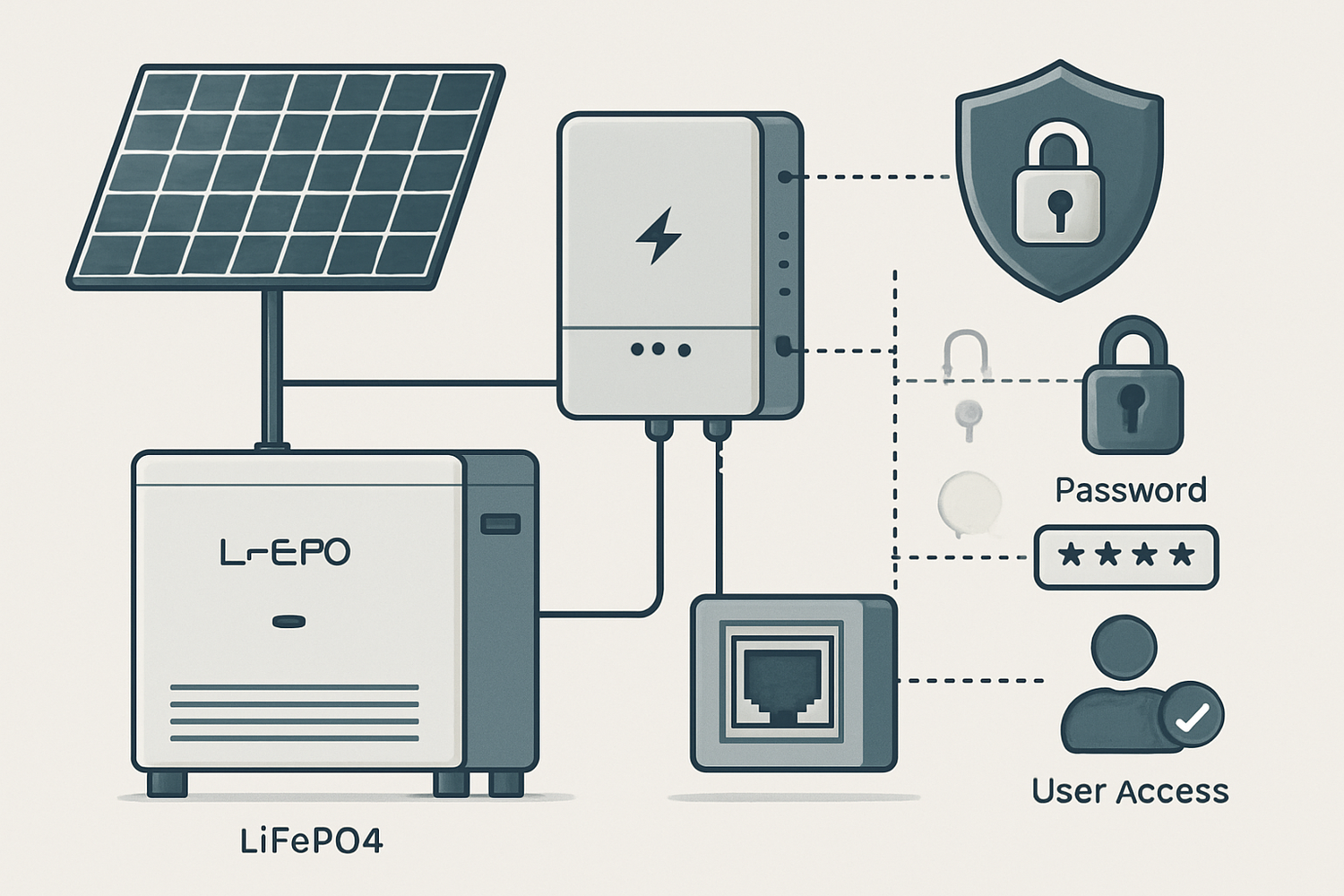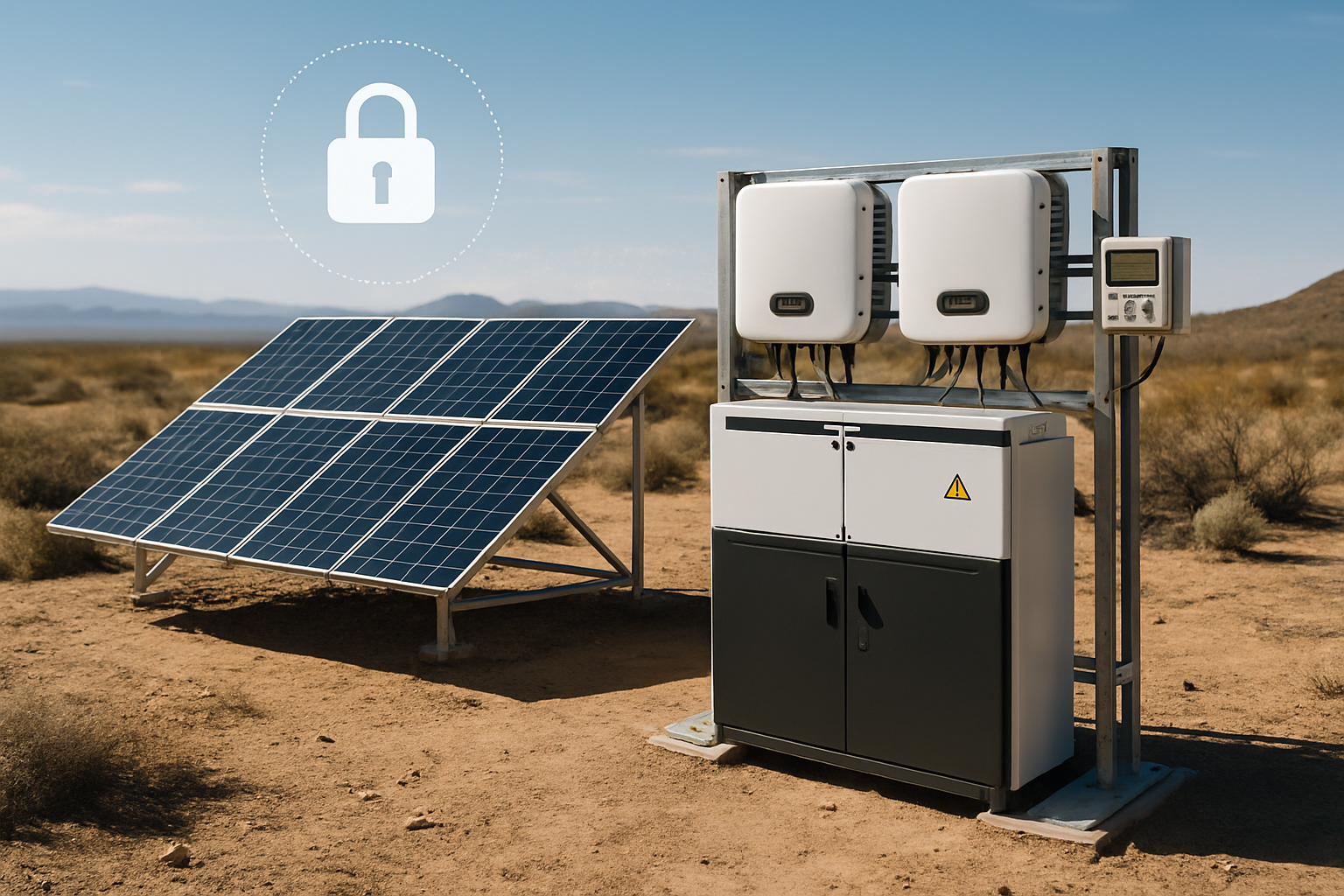Your LiFePO4-based off-grid energy storage system represents a significant investment in energy independence, but it also presents an attractive target for cybercriminals. Unlike grid-tied systems that benefit from utility-grade security infrastructure, off-grid installations often operate in isolation with minimal security oversight. This vulnerability becomes particularly concerning when you consider that cybersecurity has become one of the most critical factors for the security of electricity supply and will only grow in importance.
The three pillars of off-grid ESS security—passwords, ports, and people—form the foundation of a robust defense strategy. Each element requires careful attention and ongoing management to protect your investment and maintain operational reliability.

Password Security: Your First Line of Defense
Default passwords remain the primary entry point for attackers targeting off-grid energy systems. Many LiFePO4 ESS installations continue operating with factory-set credentials, creating an open door for unauthorized access.
Implementing Strong Authentication Policies
Your password strategy should begin with immediate replacement of all default credentials across every system component. This includes battery management systems, inverters, monitoring interfaces, and any connected IoT devices. A robust password policy requires:
- Minimum 12-character passwords combining uppercase, lowercase, numbers, and symbols
- Unique credentials for each system component
- Regular password rotation every 90 days for critical systems
- Multi-factor authentication where supported
Consider implementing a password manager specifically for your energy systems. This approach eliminates the temptation to reuse passwords while ensuring you can maintain complex, unique credentials for each component.
Advanced Authentication Methods
Certificate-based authentication provides superior security compared to password-only systems. Where possible, configure your LiFePO4 ESS components to use digital certificates for device authentication. This method significantly reduces the risk of credential theft and provides stronger identity verification.
| Authentication Method | Security Level | Implementation Complexity | Recommended Use |
|---|---|---|---|
| Default Passwords | Very Low | None | Never |
| Strong Passwords | Medium | Low | Minimum Standard |
| Multi-Factor Authentication | High | Medium | Critical Systems |
| Certificate-Based | Very High | High | Enterprise Deployments |
Port Security: Controlling Network Access Points
Network ports represent potential entry points into your off-grid ESS infrastructure. Each open port creates an attack surface that requires careful management and monitoring.
Port Hardening Strategies
Begin with a comprehensive audit of all network services running on your LiFePO4 system components. Disable unnecessary services and close unused ports immediately. Common ports that require attention include:
- SSH (port 22) - Change default port and implement key-based authentication
- HTTP/HTTPS (ports 80/443) - Disable HTTP, use HTTPS with strong certificates
- SNMP (port 161) - Disable if not required, use SNMPv3 if needed
- Telnet (port 23) - Disable completely, use SSH instead
Implement network segmentation to isolate your ESS components from other network traffic. Create dedicated VLANs for energy system communications and restrict inter-VLAN routing to essential traffic only.
Firewall Configuration and Monitoring
Deploy both network-level and host-based firewalls to control traffic flow. Configure strict ingress and egress rules that allow only necessary communications. For off-grid systems with satellite or cellular connectivity, implement bandwidth-aware security measures that balance protection with data usage costs.
Regular port scanning from both internal and external perspectives helps identify unauthorized services or configuration drift. Schedule monthly scans and investigate any unexpected open ports immediately.
People: Managing Human Access and Behavior
Human factors often represent the weakest link in cybersecurity chains. Your off-grid ESS security depends heavily on the people who install, maintain, and operate these systems.
Access Control and User Management
Implement role-based access control (RBAC) to limit user privileges based on job functions. Maintenance personnel require different access levels than daily operators or remote monitoring staff. Key principles include:
- Principle of least privilege - Grant minimum necessary access
- Regular access reviews and deprovisioning
- Separate administrative and operational accounts
- Audit logging for all user activities
For remote installations, establish clear procedures for temporary access grants during maintenance windows. Use time-limited credentials and require explicit approval for elevated privileges.
Training and Awareness Programs
Regular cybersecurity training helps users recognize and respond to threats appropriately. Focus training on:
- Phishing recognition and reporting
- Safe remote access practices
- Incident response procedures
- Physical security awareness
Document all security procedures and make them easily accessible to authorized personnel. Regular drills and simulations help ensure procedures remain effective under stress.
Integration and Monitoring
Effective security requires continuous monitoring and integrated defense strategies. Your LiFePO4 ESS security posture depends on how well these three pillars work together.
Centralized Security Management
Deploy centralized logging and monitoring solutions that aggregate security events from all system components. This approach enables correlation analysis and faster incident detection. Key metrics to monitor include:
- Failed authentication attempts
- Unusual network traffic patterns
- Configuration changes
- System performance anomalies
Automated alerting helps ensure rapid response to security events, particularly important for remote installations where manual monitoring may be impractical.
Regular Security Assessments
Schedule quarterly security assessments to evaluate the effectiveness of your password policies, port configurations, and access controls. These assessments should include vulnerability scanning, penetration testing, and policy compliance reviews.
As IRENA notes, updating software to close newly identified security holes must be possible, making regular assessments critical for maintaining security posture over time.
Building Resilient Defense
Securing your LiFePO4-based off-grid ESS requires ongoing attention to passwords, ports, and people. These three pillars create overlapping layers of protection that significantly reduce your attack surface and improve incident response capabilities.
Success depends on treating security as an operational requirement rather than a one-time implementation. Regular updates, continuous monitoring, and adaptive policies help ensure your energy independence doesn't come at the cost of cybersecurity vulnerability.
The investment in comprehensive security measures pays dividends through reduced downtime, protected assets, and maintained operational reliability. As off-grid energy systems become more sophisticated and connected, robust cybersecurity becomes not just recommended but essential for long-term success.





Leave a comment
All comments are moderated before being published.
This site is protected by hCaptcha and the hCaptcha Privacy Policy and Terms of Service apply.